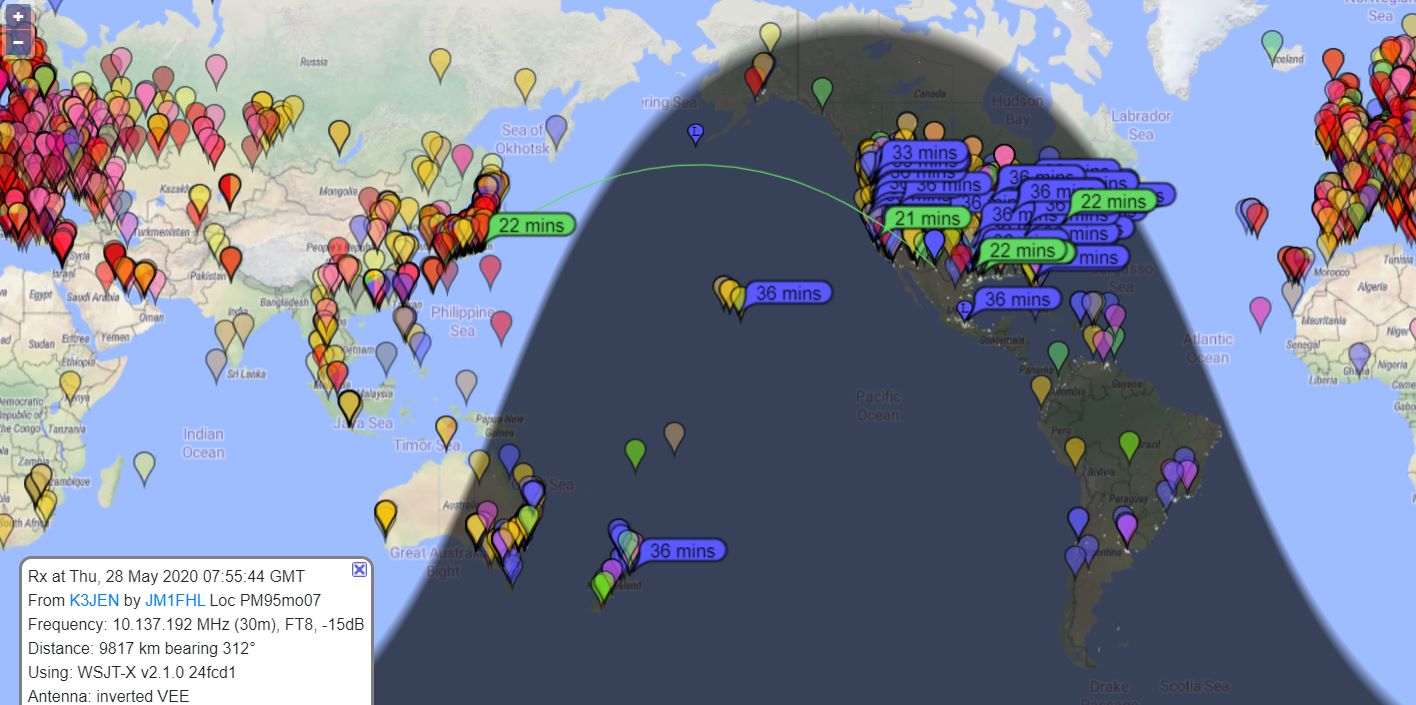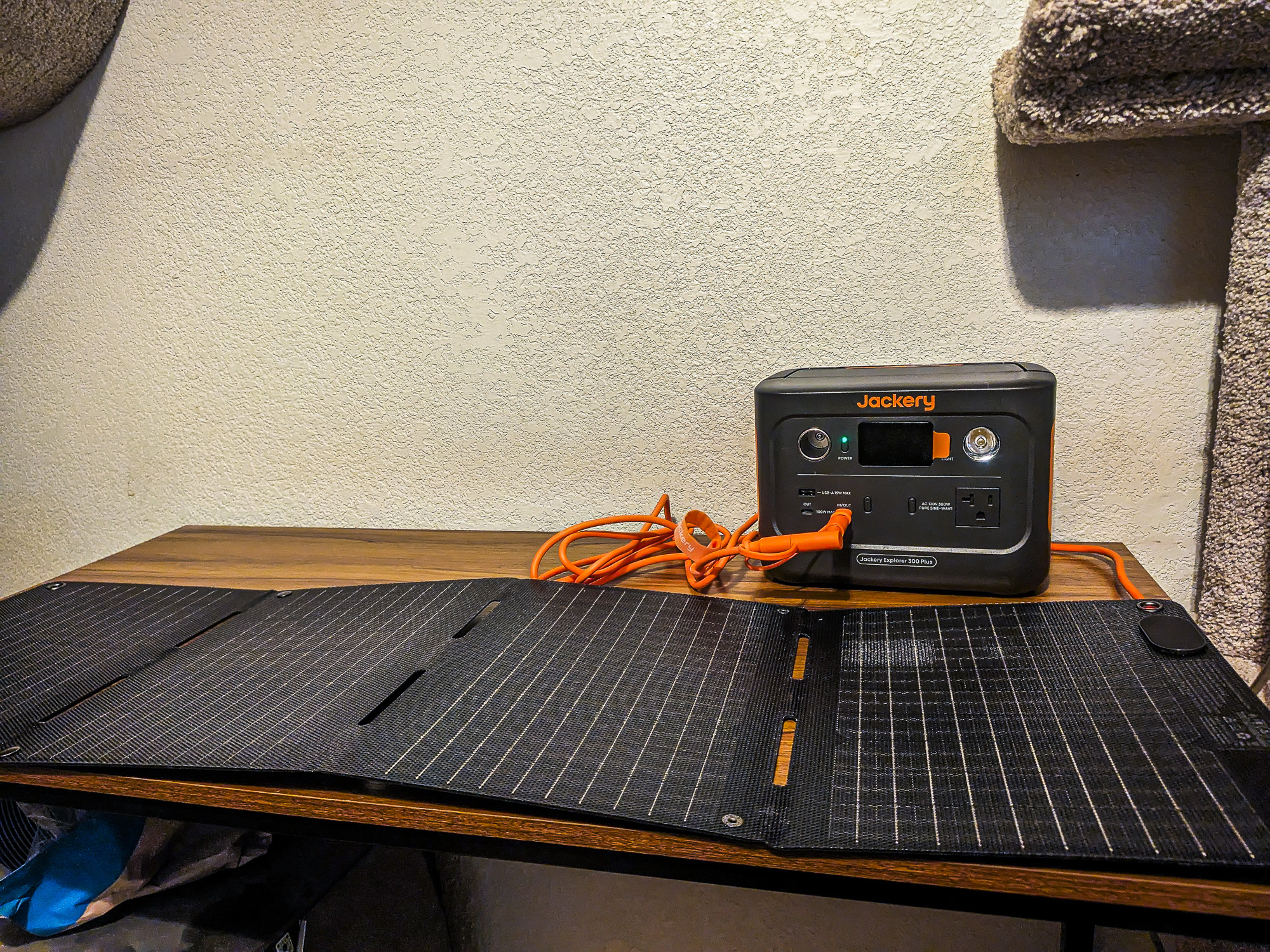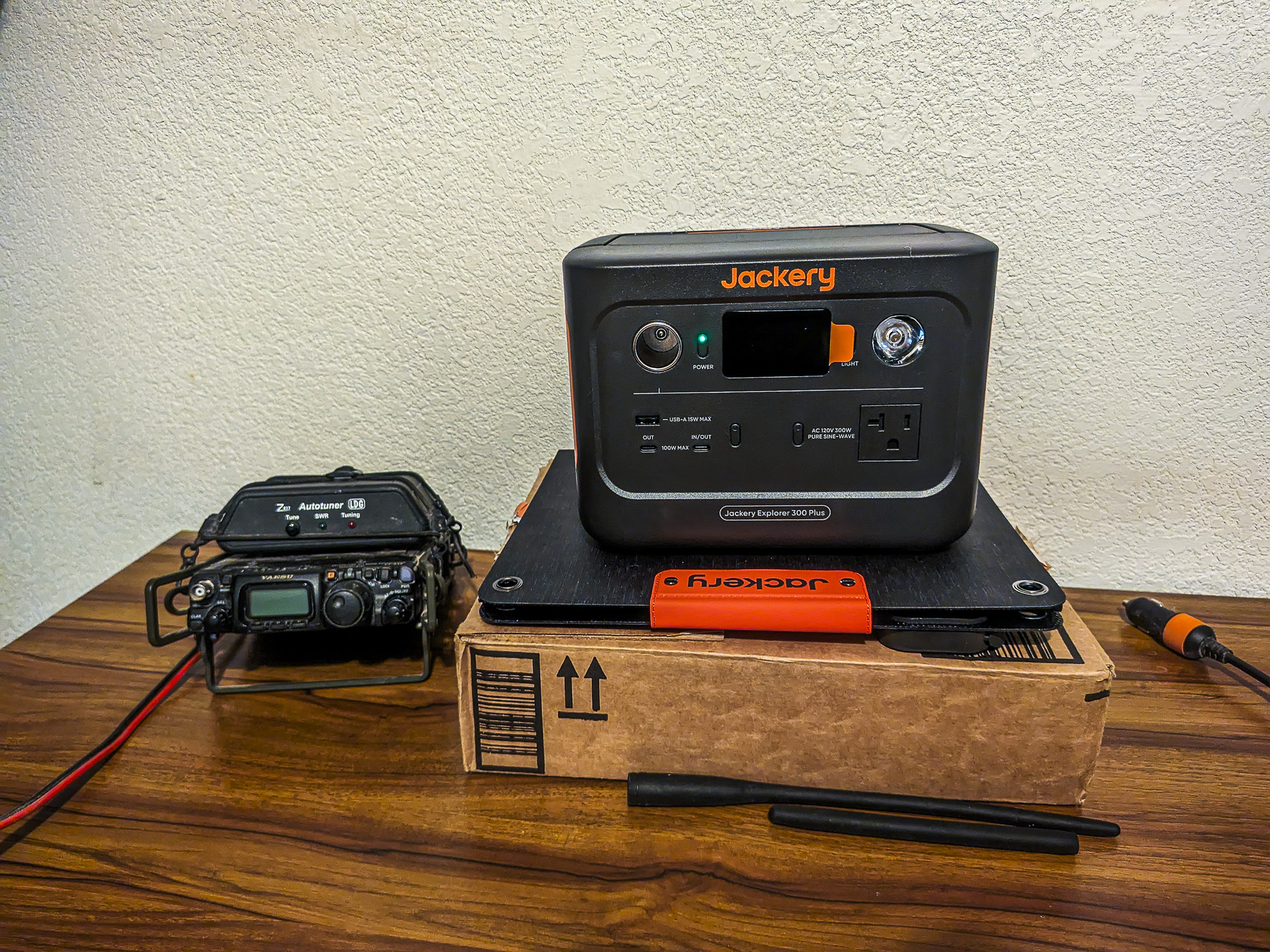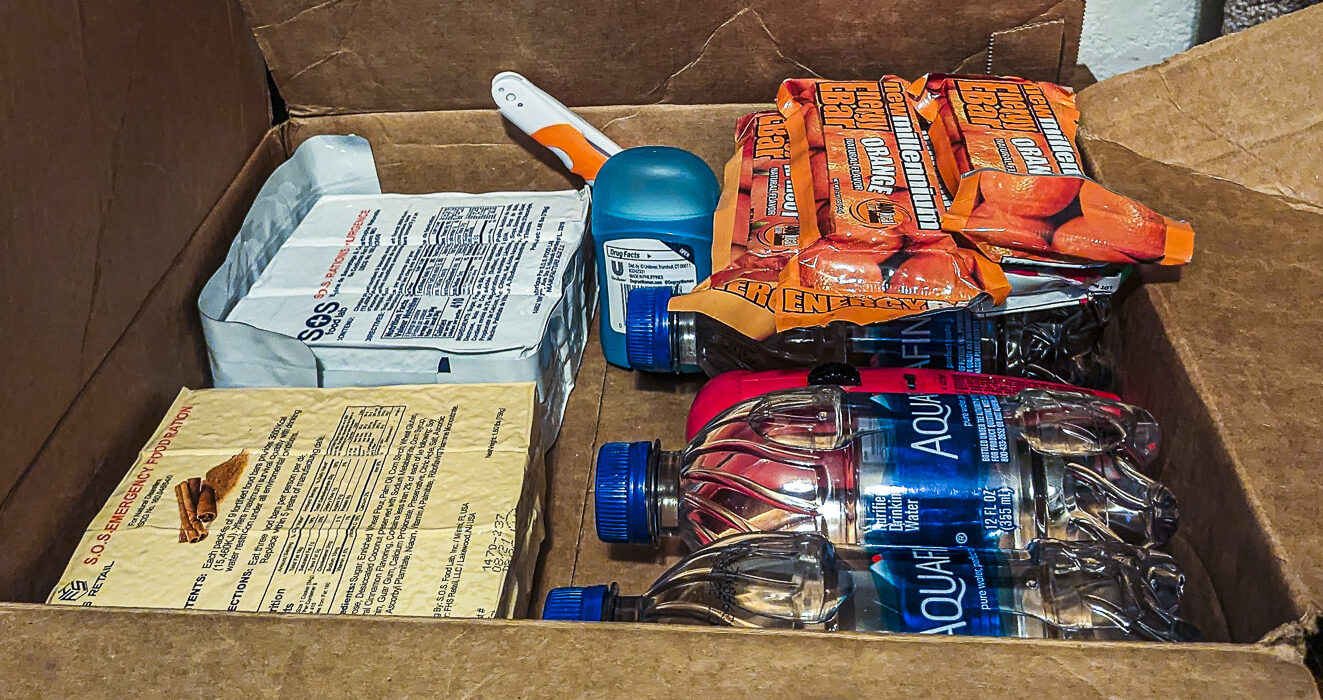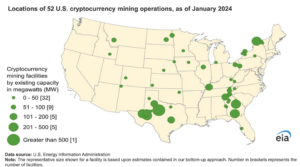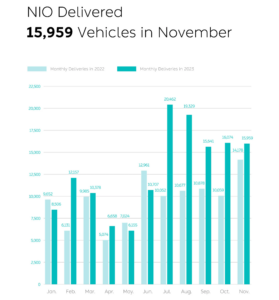Over the last few years, I’ve been working on improving a portable emergency kit. The basic concept I follow is similar to what DHS recommends, with several days worth of food and water, plus some other odds and ends. I have a backpack for each member of the family, with extra supplies for everyone stored in adults and teenagers bags, and less in children’s bags. Everyone has some food and water, but people able to carry more have tarps, tiny tents, and supplies to share with smaller kids.
Some readers may be unfamiliar with why a family should do this, so I’ll briefly explain it. In the event of a major disaster, it’s anticipated that an overwhelmed local and state government might not get sufficient amounts of federal aid to help everyone for around three days. Bungled responses like Hurricane Katrina show us that people could need basic emergency supplies for even longer if a government gets caught flat-footed enough.
One thing I do in my bag is try to carry along some extra communications supplies. We probably wouldn’t need it for our family alone, but I want to be able to help other people in the event of a major disaster, too. If communications aren’t available for hundreds of miles, people could get a great sense of relief being able to let family members know that they’re OK. Or, in the worst case, it may be necessary to communicate with people hundreds of miles away just to get much-needed help.
Here’s what my setup looked like to be able to do that in 2020:
I had a 60-watt solar panel that folds up, a small charge controller, a small LiFePo4 battery, and would use all this to power a small laptop, a Yaesu FT-818 HF radio, and some gear to translate analog to digital. I also have a small handheld radio to put in the bag for local communications.
The purpose of the HF radio is to be able to send signals over the horizon. Normally, VHF and UHF radio signals run into vegetation or mountains while stronger signals that don’t run into the earth tend to just go off into space. Anyone beyond line of sight can’t hear your signal because it simply can’t reach them. Mountaintop radio repeaters can help you extend your reach, but a major disaster might knock those out or they could end up being really crowded.
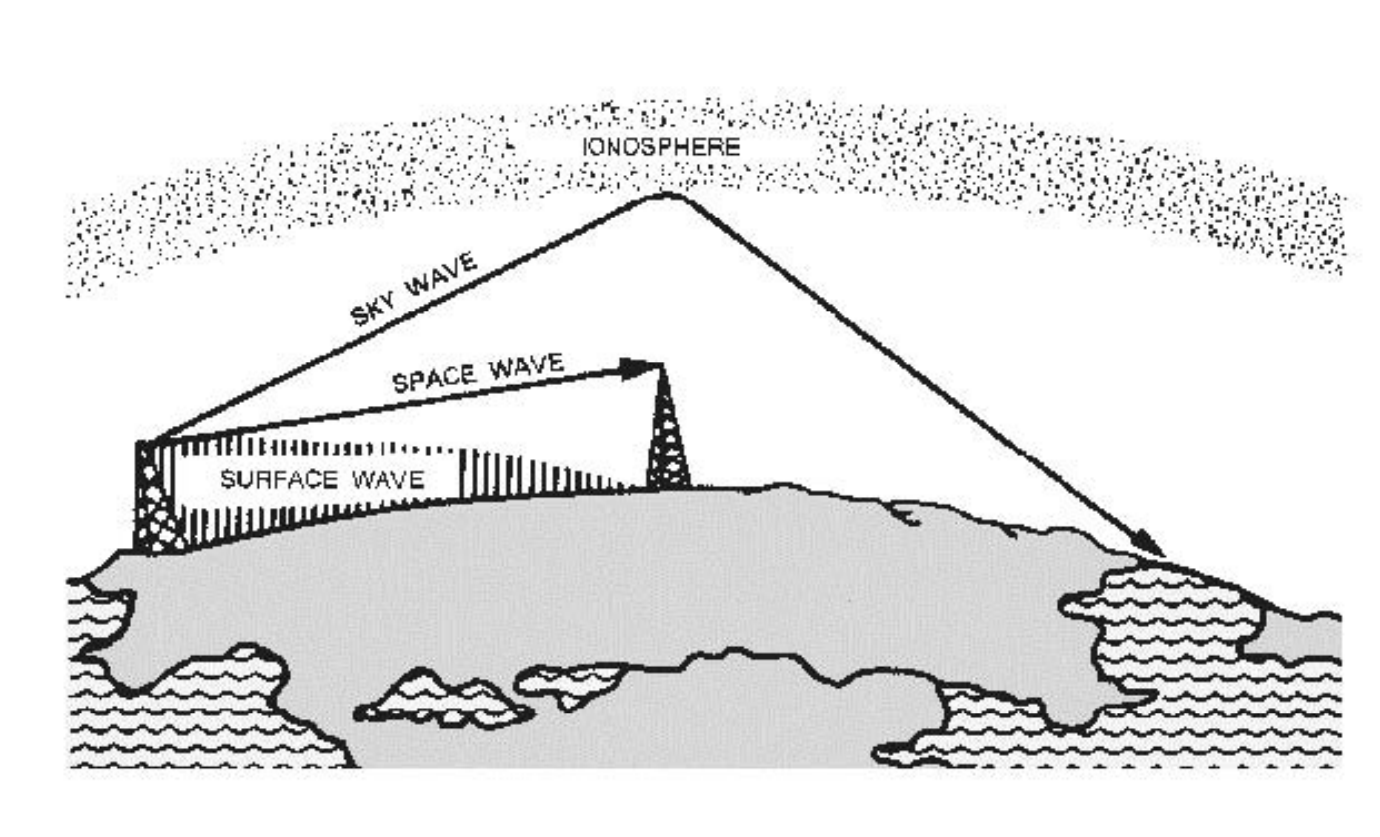
But, there’s a special range of frequencies (generally between 2-30 MHz, aka High Frequency, “HF”, or “shortwave”) that can get around all of these problems with one weird trick: bouncing off the ionosphere. My little portable Yaesu radio is capable of transmitting and receiving on those frequencies. Using carefully processed digital modes, like JS8, I can communicate around the world with as little as 1-3 watts of power.
But, all of that equipment was pretty heavy still. The panel was pretty thick folded up. The battery was heavy. But, the rest of the gear wasn’t that bad. So, I’ve been experimenting with finding lighter gear over the last three years.
The smallest power station I’ve come up with so far is the Gooloo GTX 280. It’s got 280 watt-hours of storage, and it has an inverter you can plug into it to power other things. It’s not very strong in output, but it’s got more than enough power for my laptop, radio, and other gear. Overall, it saved a lot of weight compared to a Jackery Explorer 300 I was trying to squeeze into the bag.
Next, I needed to get the solar panel down in size and weight. 60 watts proved to be a lot more than I really needed, and the big, canvas sided cheap panel I bought from Amazon in 2020 was just too darned heavy and bulky. But, I decided to give Jackery’s smallest offering a try.
I’m not doing a review of the panel here, but it suffices to say that it’s far smaller and lighter than my 60 watt panel while still producing around 35-40 watts of power. I only need 10-20 watts, so this works well for my needs. It works with any of the company’s Explorer 300 power stations, but I’ll likely use it with the Gooloo because it’s smaller and lighter.
Folded up, the whole setup is a lot smaller, with the panel taking up less space than my emergency rations box. This allowed me to put the whole setup in a smaller bag that puts a lot less strain on my back.
For people curious about what’s in the cardboard box, here’s a peek:
To save weight and space, I use the little 3600-calorie emergency rations with a 5-year shelf life. They taste like graham crackers, and break into 400-calorie pieces. I have about 6 days worth of these rations in my bag. Add some water bottles, some toiletries, and a few other odds and ends, like a water filtration system, and I’m set up to suffer a lot less than someone who walks into the desert with just the clothes on their back.
Eventually, I want to replace the cardboard box with something a little smaller, but for now it does the job of making it easy to remove the rations for times I just want to go play with the radio gear on hikes.
I’m still working on ways to get this whole setup lighter and more power efficient. One thing I’m working on is replacing the whole laptop with a Raspberry Pi computer that my folding phone can connect to. This will save a ton of weight all by itself, while using less power. It can also make for easier on-the-go radio operating at some point.
Next, I want to replace handheld radios we carry in our bags with Meshtastic networking nodes. These use a lot less power and can provide secure text messaging on unlicensed radio frequencies. I’m the only licenses amateur radio operator in the family, and getting people to get a license is like pulling teeth. So, coming up with a better solution that works with existing things like phones can really make a difference.
So, there’s still plenty of work to be done improving the setup further!
All images except the radio propagation diagram by Jennifer Sensiba.
Have a tip for CleanTechnica? Want to advertise? Want to suggest a guest for our CleanTech Talk podcast? Contact us here.
Our Latest EVObsession Video
[embedded content]I don't like paywalls. You don't like paywalls. Who likes paywalls? Here at CleanTechnica, we implemented a limited paywall for a while, but it always felt wrong — and it was always tough to decide what we should put behind there. In theory, your most exclusive and best content goes behind a paywall. But then fewer people read it!! So, we've decided to completely nix paywalls here at CleanTechnica. But...
Thank you!
Advertisement
CleanTechnica uses affiliate links. See our policy here.
- SEO Powered Content & PR Distribution. Get Amplified Today.
- PlatoData.Network Vertical Generative Ai. Empower Yourself. Access Here.
- PlatoAiStream. Web3 Intelligence. Knowledge Amplified. Access Here.
- PlatoESG. Carbon, CleanTech, Energy, Environment, Solar, Waste Management. Access Here.
- PlatoHealth. Biotech and Clinical Trials Intelligence. Access Here.
- Source: https://cleantechnica.com/2023/12/15/portable-solar-keeps-getting-lighter-and-more-compact-fits-better-in-emergency-kits/
- :has
- :is
- :not
- $UP
- 15%
- 2000
- 2020
- 300
- 36
- 60
- 700
- a
- Able
- About
- add
- adults
- Advertise
- Affiliate
- Aid
- aka
- All
- allowed
- alone
- along
- also
- always
- amateur
- Amazon
- amounts
- an
- and
- Anticipated
- any
- anyone
- around
- AS
- At
- available
- away
- back
- Bad
- bag
- bags
- basic
- battery
- BE
- because
- been
- behind
- being
- BEST
- Better
- between
- Beyond
- Big
- Bit
- bought
- Box
- Break
- briefly
- but
- by
- CAN
- Can Get
- canvas
- capable
- carefully
- carry
- case
- caught
- charge
- cheap
- chip
- cleantech
- Cleantech Talk
- clothes
- come
- coming
- communicate
- Communications
- compact
- Companies
- Company’s
- compared
- completely
- computer
- concept
- Connect
- content
- controller
- could
- crowded
- curious
- Days
- decide
- decided
- Department
- department of homeland security
- DESERT
- DHS
- difference
- digital
- disaster
- do
- does
- doing
- domain
- don
- done
- Dont
- down
- each
- earth
- easier
- easy
- efficient
- embedded
- emergency
- end
- ends
- enough
- equipment
- Even
- Event
- everyone
- Except
- Exclusive
- existing
- Explain
- explorer
- extend
- extra
- family
- family members
- far
- Federal
- felt
- few
- fewer
- finding
- folds
- follow
- food
- For
- Frequency
- from
- Gear
- generally
- get
- getting
- Give
- Go
- Goes
- got
- Government
- graham
- great
- Guest
- had
- Have
- hear
- heavy
- help
- here
- High
- Hikes
- homeland
- Homeland Security
- horizon
- HTTPS
- Hundreds
- hurricane
- i
- I’LL
- if
- images
- implemented
- improving
- in
- into
- IT
- itself
- Jennifer
- Job
- jpg
- just
- kids
- kit
- Know
- laptop
- Last
- latest
- less
- let
- License
- licenses
- Life
- lighter
- like
- likely
- likes
- Limited
- Line
- links
- little
- local
- longer
- looked
- Lot
- major
- make
- Making
- max-width
- May..
- me
- Media
- member
- Members
- messaging
- might
- modes
- more
- most
- mountaintop
- much-needed
- my
- necessary
- Need
- needed
- needs
- networking
- New
- news
- normally
- now
- Odds
- of
- off
- offering
- on
- ONE
- only
- operating
- operator
- or
- Other
- our
- out
- output
- over
- overall
- overwhelmed
- panel
- People
- phone
- phones
- pieces
- plato
- Plato Data Intelligence
- PlatoData
- Play
- player
- Plenty
- plug
- plus
- podcast
- Point
- policy
- portable
- power
- pretty
- probably
- problems
- processed
- producing
- propagation
- proved
- provide
- public
- publish
- pulling
- purpose
- put
- Puts
- Radio
- range
- Raspberry
- Raspberry Pi
- reach
- Read
- Reader
- readers
- ready
- really
- receiving
- relief
- remove
- replace
- responses
- REST
- review
- Run
- Save
- saved
- say
- secure
- security
- see
- send
- sense
- set
- setup
- several
- Share
- Shelf
- should
- show
- Sight
- Signal
- signals
- simply
- Size
- small
- smaller
- So
- so Far
- solar
- solar panel
- solution
- some
- Someone
- something
- Space
- special
- Squeeze
- State
- station
- Stations
- Still
- storage
- stored
- Stories
- strong
- stronger
- sufficient
- suggest
- supplies
- support
- system
- T
- taking
- Talk
- taste
- team
- teenagers
- tend
- text
- than
- that
- The
- the world
- their
- Them
- then
- theory
- There.
- These
- they
- thing
- things
- this
- those
- three
- times
- tip
- to
- Ton
- too
- tough
- translate
- try
- trying
- unfamiliar
- Updates
- us
- use
- uses
- using
- Ve
- very
- Video
- walks
- want
- was
- Water
- Water Bottles
- ways
- we
- weight
- WELL
- What
- while
- WHO
- whole
- why
- will
- with
- Work
- working
- works
- world
- Worst
- worth
- would
- write
- Wrong
- years
- you
- Your
- youtube
- zephyrnet


